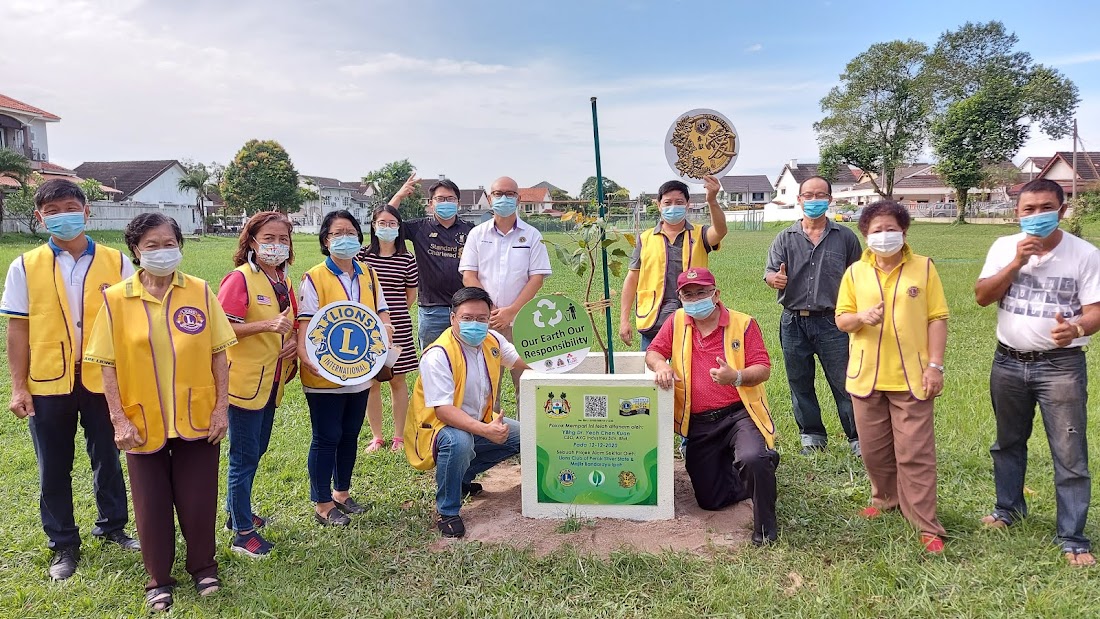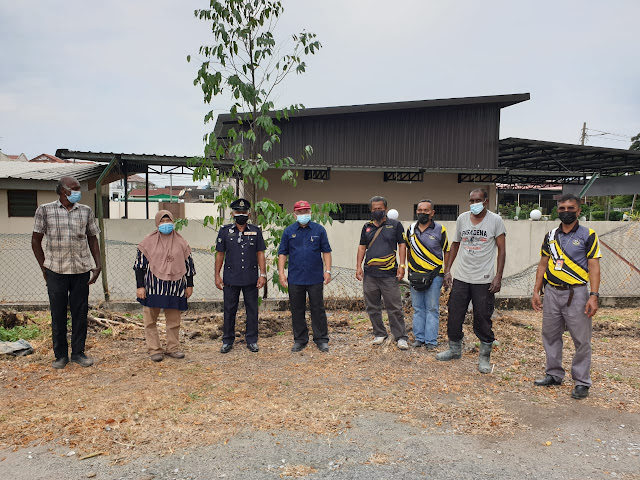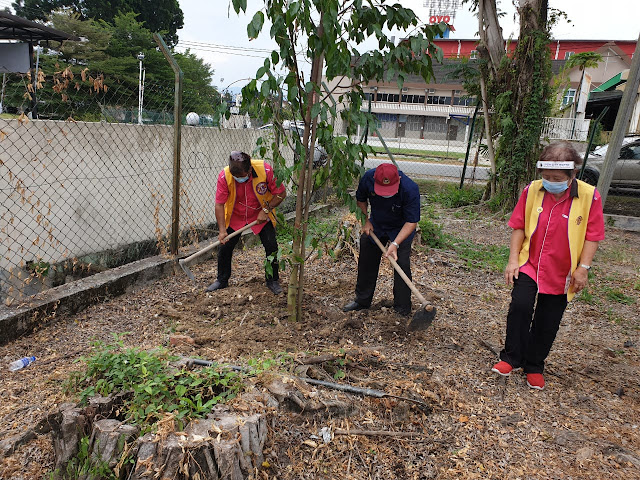10 Oct 2021
The Ipoh City Councillor (MBI) has planted 88
trees as part of the 1,500 pledged for 2021 at Taman Pakatan Jaya in Ipoh. This
is part of the Perak Bumi Lestari Project which aims to plant 1 million trees
by 2030. It is also in line with MBI’s Low Carbon City 2030 mission.
Three organisations, the Lions Club of Perak
Silver State, Lions Club of Hillview Cameron Highlands and The Loyal Academy Sdn.
Bhd. have teamed up to carry out tree tagging with Laminated QR Code on all the
88 trees in order to create awareness and educate the public on the importance
of planting trees as well as to provide information about the trees planted and
its carbon dioxide sequestration ability.By scanning the QR code, the public will the be
linked to a website containing the information about the trees planted.
Two major types of trees planted here include; the
tembusu or Fragraea fragrans and the Bunga Tanjung or
Mimusops elengi.
The tembusu or Fragraea fragrans can grow up to 25m tall. The wood can last over a hundred years,
particularly as termites and beetles do not eat this kind of
wood. The tree yields a high quality
timber and an excellent fuel and charcoal. It is planted in reforestation and
soil stabilization programmes and is also often planted as an ornamental and
shade tree in parks and along roads.
The Bunga Tanjung or Mimusops elengi has other common names which include Spanish cherry, medlar, and bullet wood. Its timber is valuable, the fruit is
edible, and it is used in traditional medicine. As the trees give thick shade
and flowers emit fragrance, it is a prized collection of gardens. The
tree can grow up to 16m with 1m circumference.
According to Dr. Richard Ng, Organising Chairman
of the project who is also MBI’s Councillor, the trees are planted on the road
reserved land, to provide shades and greenery to the surrounding areas. When
matured within 5 to 10 years, each tree weighing 1,000 kg will be able to
absorb about 3,670 kg CO2 a year. This means that these 88 trees will be able
to absorb about 322,960 kg of CO2 a year and produce 120,000 kg of O2.The temperature in this area will be much lower.
The environment will be much greener with more oxygen produced making those
people from about 1,000 households living here become healthier. Of course the
price of the property will also increase as a result.
Thus, we hope that the people will appreciate what
MBI is doing. They should help protect the trees here rather than destroying
and replacing them with mango and rambutan trees.
The trees were planted along Laluan Hulu Bercham 1 as shown below:
These trees form part of the Perak Lestari 1,000,000 million trees programme and also the MBI Low Carbon City projects to save our planet Earth. Trees help to absorb carbon emission and lower earth temperature. Effort must be made to reduce the earth temperature to not more than 2 degrees Celcius.
The impact of global warming is real and climate change is already happening now. By 2050 if nothing is done, climate change will cause disaster worse than thee covid-19 pandemic now.
Each tree will be tied with a tag which contain information about the tree planted and when it was planted by MBI.
Two variety of trees were planted here. According to MBI Town and Landscape Department, the two types of trees are:
1. The tembusu or Fragraea fragrans
2. The Bunga Tanjung or Mimusops elengi
The tagging of trees come in the form of Lamintaed Card with QR code linking to this website.
1. The tembusu or Fragraea fragrans Tree


Its trunk is dark brown, with deeply fissured bark, looking somewhat like a bittergourd. The tree grows in an irregular shape from 10 to 25 metres high, with light green oval-shaped leaves, and yellowish flowers with a distinct fragrance. The fruits of the tree are bitter tasting red berries, which are eaten by Pteropus fruit bats.
The trunk of this tree can produce very hard wood that can be used to make chopping boards.
The wood can last over a hundred years, particularly as termites and weevils do not eat this kind of wood. People always use this wood for creating the floors of their homes and love to sleep on it.
The tree yields a high quality timber and an excellent fuel and charcoal. It is planted in reforestation and soil stabilization programmes and is also often planted as an ornamental and shade tree in parks and along roads.
For details: Fragraea Fragrans
2. The Bunga Tanjung or Mimusops elengi
Mimusops elengi is a medium-sized evergreen tree found in tropical forests in South Asia, Southeast Asia and northern Australia. English common names include Spanish cherry, medlar, and bullet wood. Its timber is valuable, the fruit is edible, and it is used in traditional medicine. As the trees give thick shade and flowers emit fragrance, it is a prized collection of gardens.
Its flower is the provincial flower of Yala Province, Thailand, as well as the city flower of Ampang Jaya, Selangor, Malaysia.
Bullet wood is an evergreen tree reaching a height of about 16 m (52 ft). It flowers in April, and fruiting occurs between June and October. The leaves are glossy, dark green, oval-shaped, 5–14 cm (2.0–5.5 in) long, and 2.5–6 cm (0.98–2.36 in) wide. The flowers are cream, hairy, and scented. The fruits are fleshy, range in color between yellow and brown, and contain a large brown seed. The pulp has a yellow color and it is edible. The bark of the tree is thick and appears dark brownish black or grayish black in colour, with striations and a few cracks on the surface. The tree may reach up to a height of 9–18 m (30–59 ft) with about 1 m (3 ft 3 in) in circumference.
For details: Mimusops elengi

























































